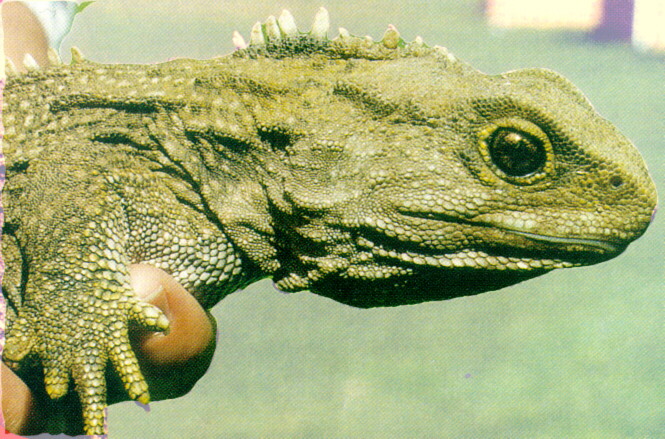 Our school has a tuatara painted on the wall. We've got books about tuatara in our library. But none of us had ever touched one until, one day recently, our school had a visitor – a real, live tuatara. And the scientists who brought it to our school let us touch it! The name "tuatara" means "spiny back" in Māori. We thought the tuatara's skin might feel hard and leathery, but when we picked it up, we found that its skin was soft and scaly. Its front and back legs looked very powerful, and there were long, sharp claws on its feet. We found out that tuatara have probably lived in New Zealand for at least eighty million years. There is nowhere else in the world that you can find tuatara living in the wild. Tuatara live in burrows, and their young hatch out from eggs. On sunny days, tuatara sunbathe just outside their burrows, storing heat from the sun. At night, they come out to hunt insects, such as beetles, and weta. They also eat lizards, seabirds and their eggs, and even baby tuatara. Tuatara have very good eyesight, and the pupils of their eyes expand in the dark so they can see at night. Tuatara can move quite quickly, but only over short distances. Therefore, during the daytime, they can easily be harmed by predators. People, rats, cats, dogs, and pigs have killed tuatara on the mainland, so scientists are working hard to find out what can be done to help save them from extinction. |

